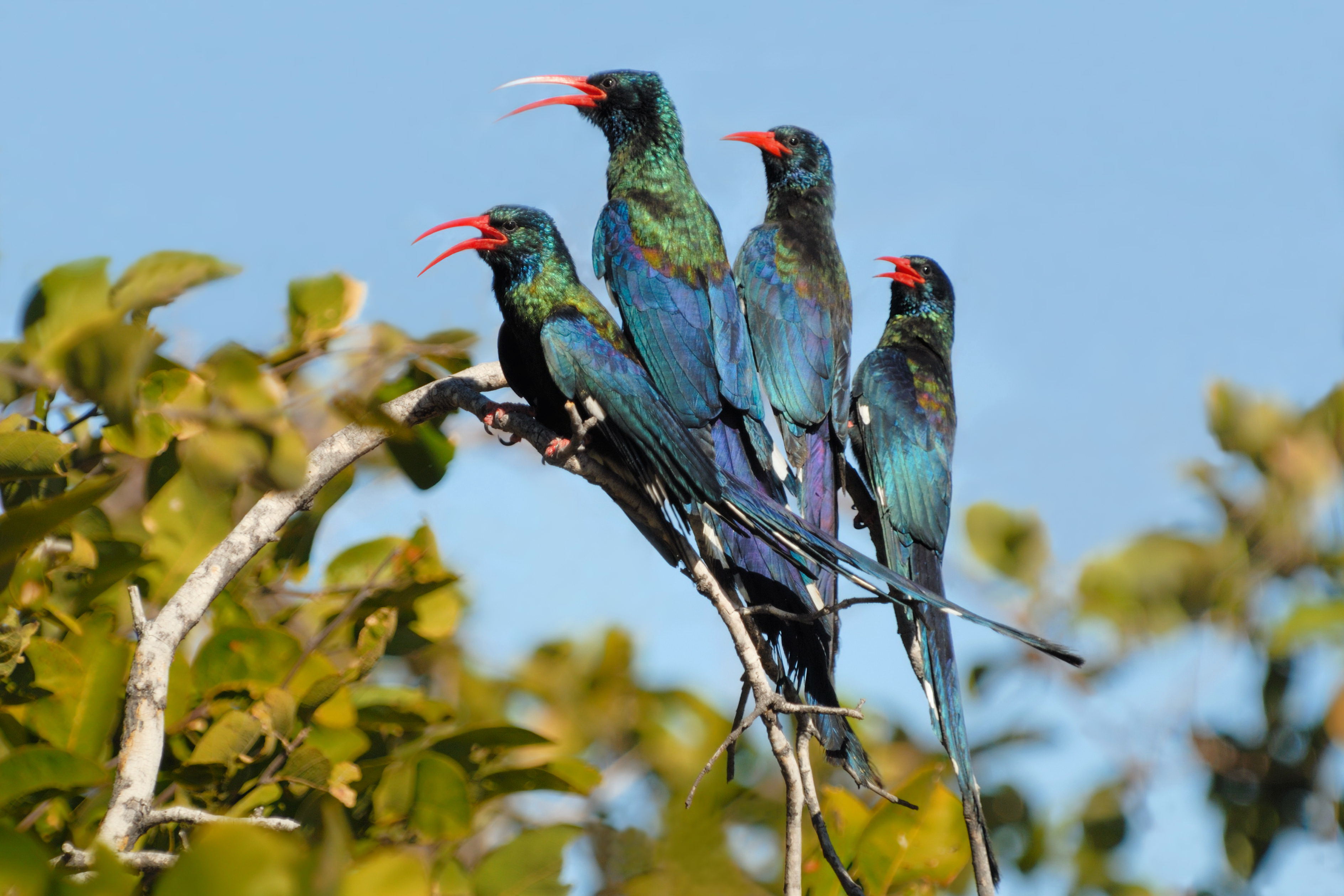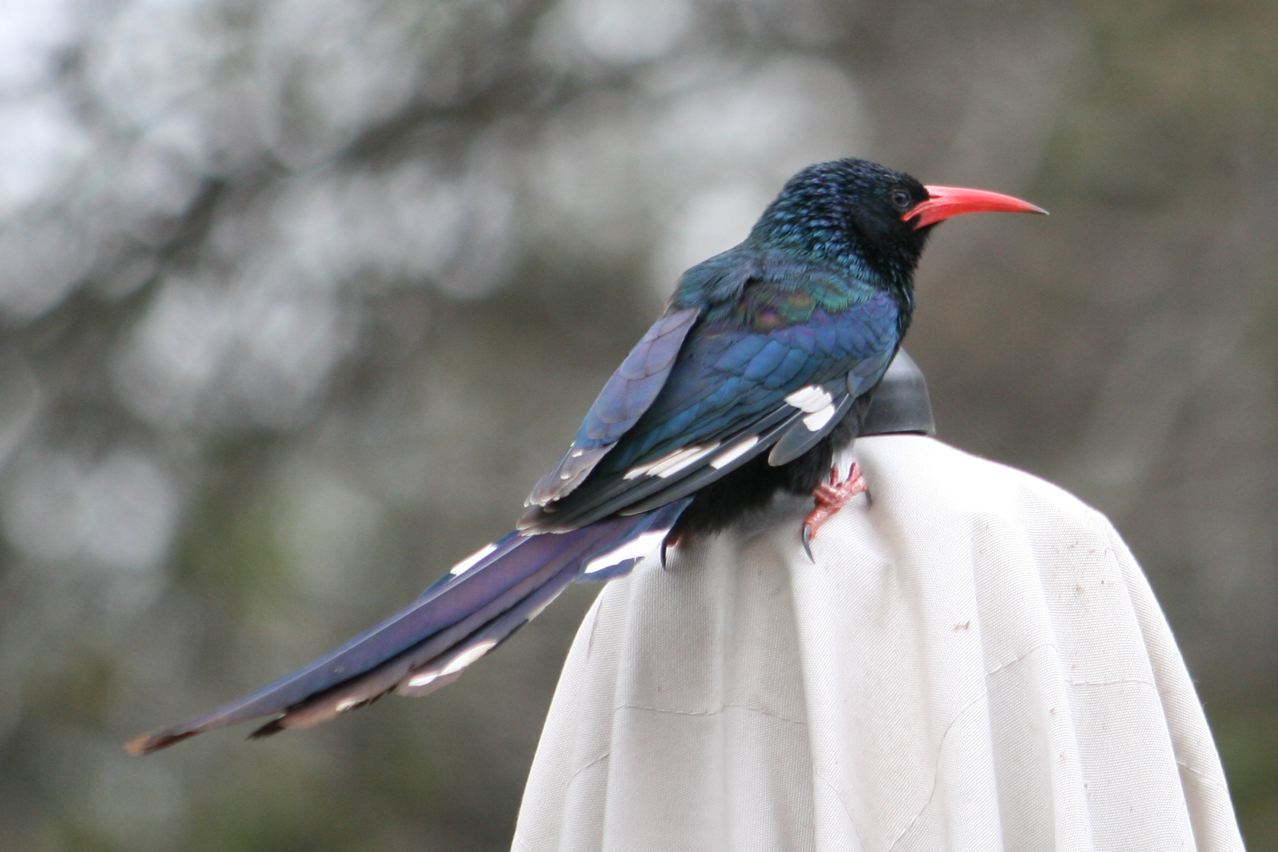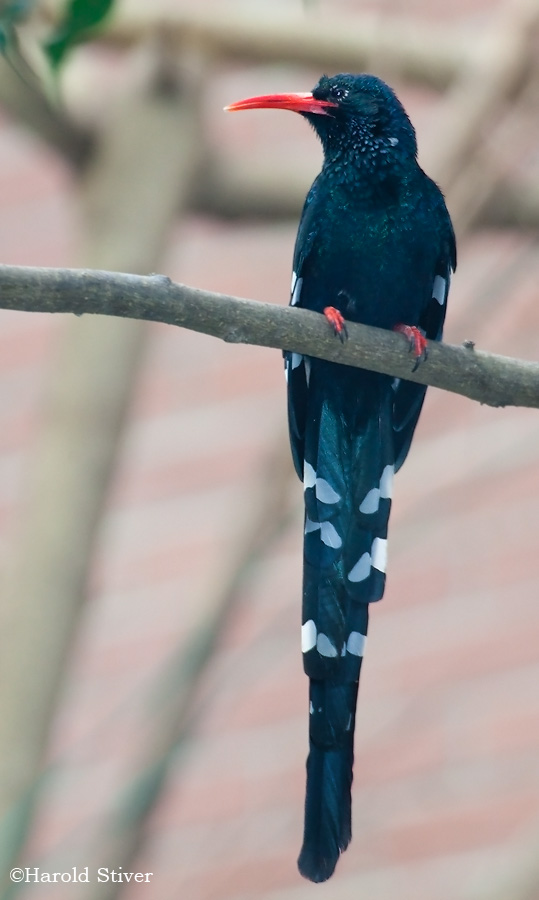
Phoeniculus purpureus
SUBFAMILY
Phoeniculinae
TAXONOMY
Promperops purpureus J. F. Miller, 1784, Cape Province, South
Africa. Eleven subspecies.
OTHER COMMON NAMES
English: Red-billed woodhoopoe; French: Irrisor moqueur;
German: Baumhopf; Spanish: Abubilla-arbуrea Verde.
PHYSICAL CHARACTERISTICS
13–15 in (32–37 cm), 2–3.5 oz (54–99 g). Largest, most widespread
woodhoopoe. Black plumage with variable green and
purple gloss, white spots on flight feathers and tip of tail, red
bill and feet (bill black in some populations), male bill length
and mass 18–20% more than female.
DISTRIBUTION
Sub-Saharan Africa. P. p. guineensis: northern Senegal, Mail,
eastern to northern Ghana; P. p. senegalensis: southern Senegal
east to Ghana; P. p. niloticus: northeast Zaire, Sudan to western
Ethiopia; P. p. abyssinicus: northern Ethiopia and Eritrea;
P. p. neglectus: central Ethiopia; P. p. somaliensis: southeast
Ethiopia, Somalia to northeast Kenya; P. p. marwitzi: southern
Somalia, Kenya, eastern Uganda, south to eastern South
Africa; P. p. granti: southern Ethiopia and Kenya; P. p.
damarensis: southwest Angola and northwest Namibia; P. p. angolensis:
eastern Angola and eastern Namibia, east to western
Zambia and western Zimbabwe; P. p. purpureus: southeastern
South Africa.
HABITAT
Open woodland, savanna, and dry mixed scrub with a few
larger trees, to over 6,560 ft (2,000 m) above sea level.
BEHAVIOR
Group-living, advertise territory with loud cackling calls and
bowing displays. Often allopreen and exchange food in social
BEHAVIOR
.
FEEDING ECOLOGY AND DIET
Probe cracks or bark on tree trunks and limbs for invertebrate
food such as caterpillars, beetle larvae, and spiders. Sometimes
dig in animal dung on the ground, hawk insects in flight, or
pirate food from nestlings of other species.
REPRODUCTIVE BIOLOGY
Breed cooperatively, alpha pair assisted by adult and juvenile
helpers. Nest in tree hole, or rarely in ground or building, usually
during late summer wet season. Lay two to five eggs, incubation
17–18 days, nestling period about 30 days, female and
chicks fed by group. Sometimes parasitized by greater honeyguide
(Indicator indicator).
CONSERVATION STATUS
Not threatened. Widespread and common throughout its
range, including in a number of large national parks.
SIGNIFICANCE TO HUMANS
None known, but often found in gardens and parks.
Other popular Animals
Photo Gallery of - Green woodhoopoe




 Animalia Life
Animalia Life